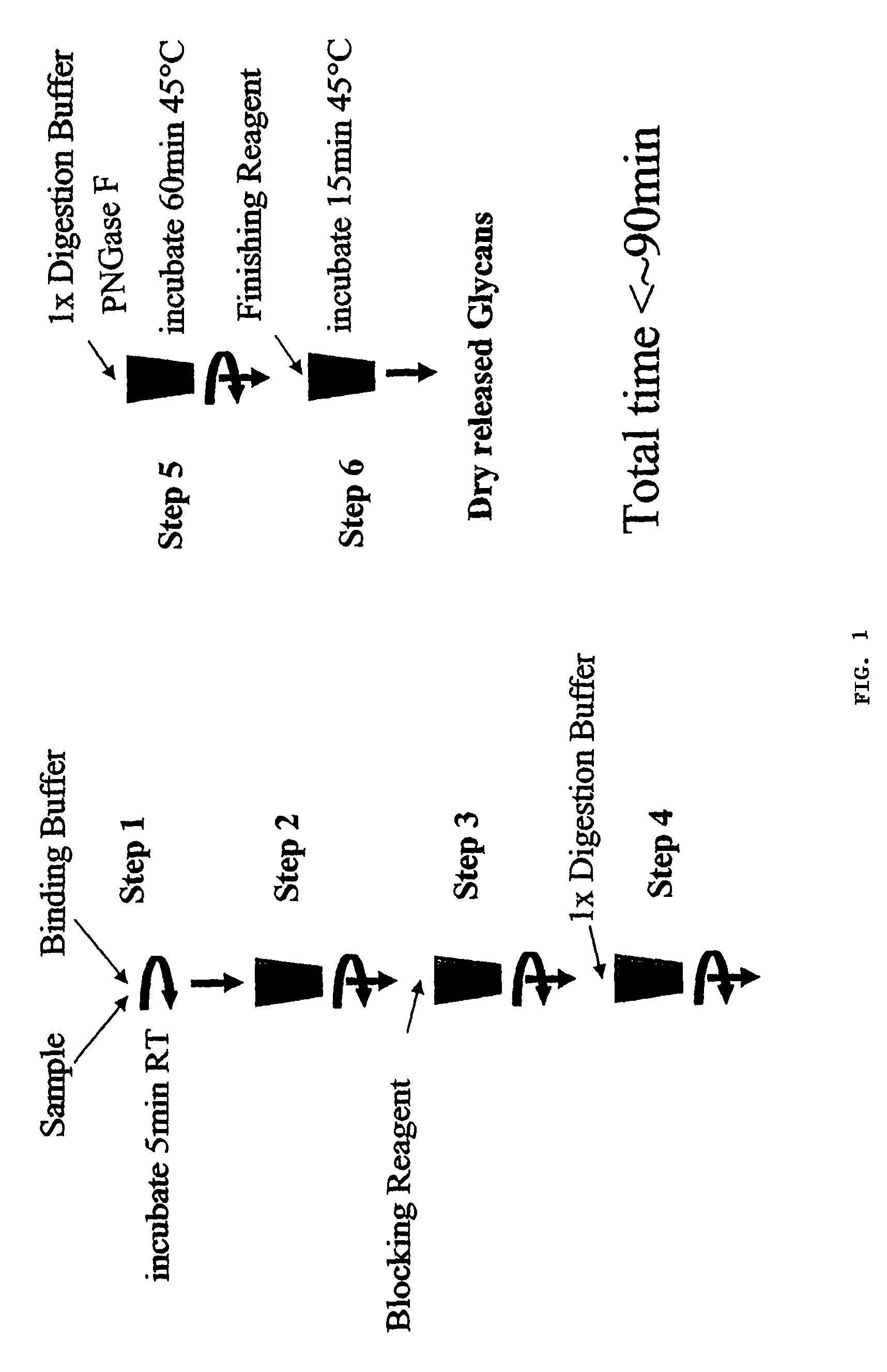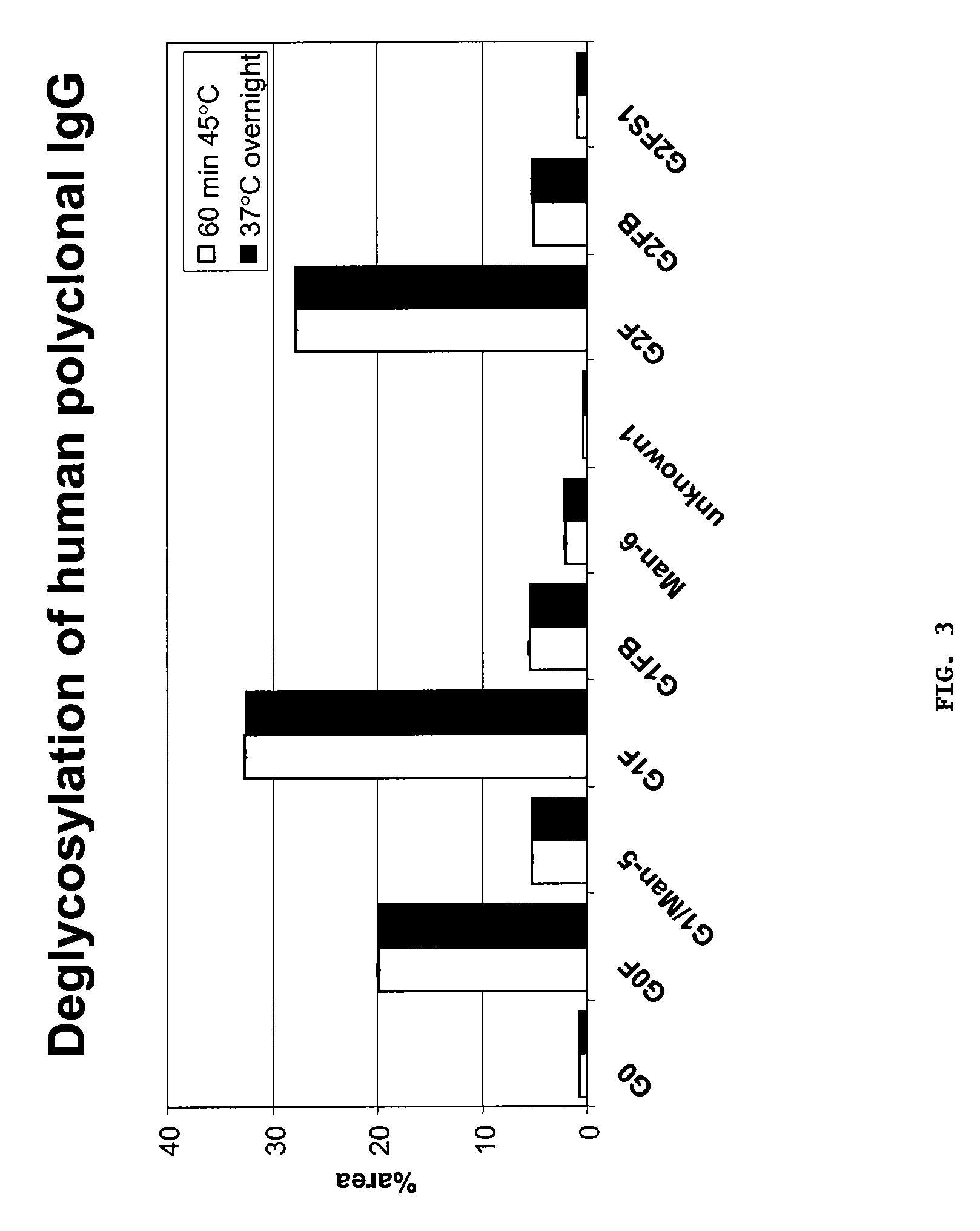Rapid deglycosylation of glycoproteins
a glycoprotein and glycosylation technology, applied in the field of glycosylation rapid deglycosylation of glycoproteins, can solve the problems of partial degradation of labile constituents of n-glycans, such as sialic acids, and the loss of carbohydrates
- Summary
- Abstract
- Description
- Claims
- Application Information
AI Technical Summary
Problems solved by technology
Method used
Image
Examples
Embodiment Construction
Introduction
[0015]Removing carbohydrates from proteins, a process called “deglycosylation,” is important for a variety of biotechnology processes. Analysis of the profile of the released carbohydrates is important, for example not only for proteins intended for therapeutic use, in which the carbohydrates placed on the protein may determine clinical efficacy, but also in production of recombinant proteins, in which a change in carbohydrate profile may indicate stress in the system, signaling conditions that may require a commercial-scale fermenter of expensive protein to be discarded.
[0016]A subset of proteins can be deglycosylated under native, or non-denaturing, conditions, in which the protein is simply mixed with an enzyme that will release from the protein the glycans conjugated to the protein. These methods have the advantage of mild conditions and simple clean up, but often result in incomplete release of glycans. Most proteins, however, need to be denatured before they can be...
PUM
| Property | Measurement | Unit |
|---|---|---|
| Time | aaaaa | aaaaa |
| Acidity | aaaaa | aaaaa |
| Detergency | aaaaa | aaaaa |
Abstract
Description
Claims
Application Information
 Login to View More
Login to View More - R&D
- Intellectual Property
- Life Sciences
- Materials
- Tech Scout
- Unparalleled Data Quality
- Higher Quality Content
- 60% Fewer Hallucinations
Browse by: Latest US Patents, China's latest patents, Technical Efficacy Thesaurus, Application Domain, Technology Topic, Popular Technical Reports.
© 2025 PatSnap. All rights reserved.Legal|Privacy policy|Modern Slavery Act Transparency Statement|Sitemap|About US| Contact US: help@patsnap.com



